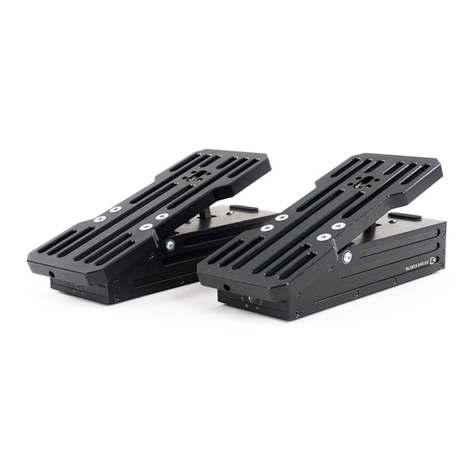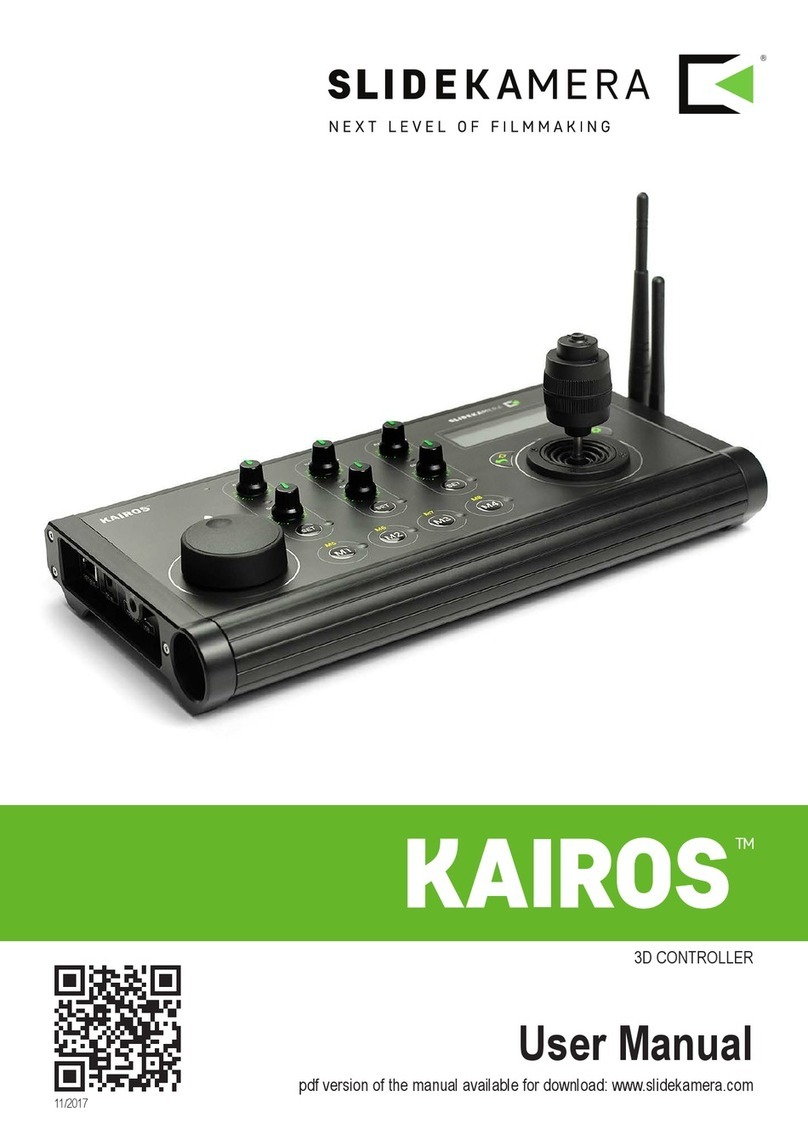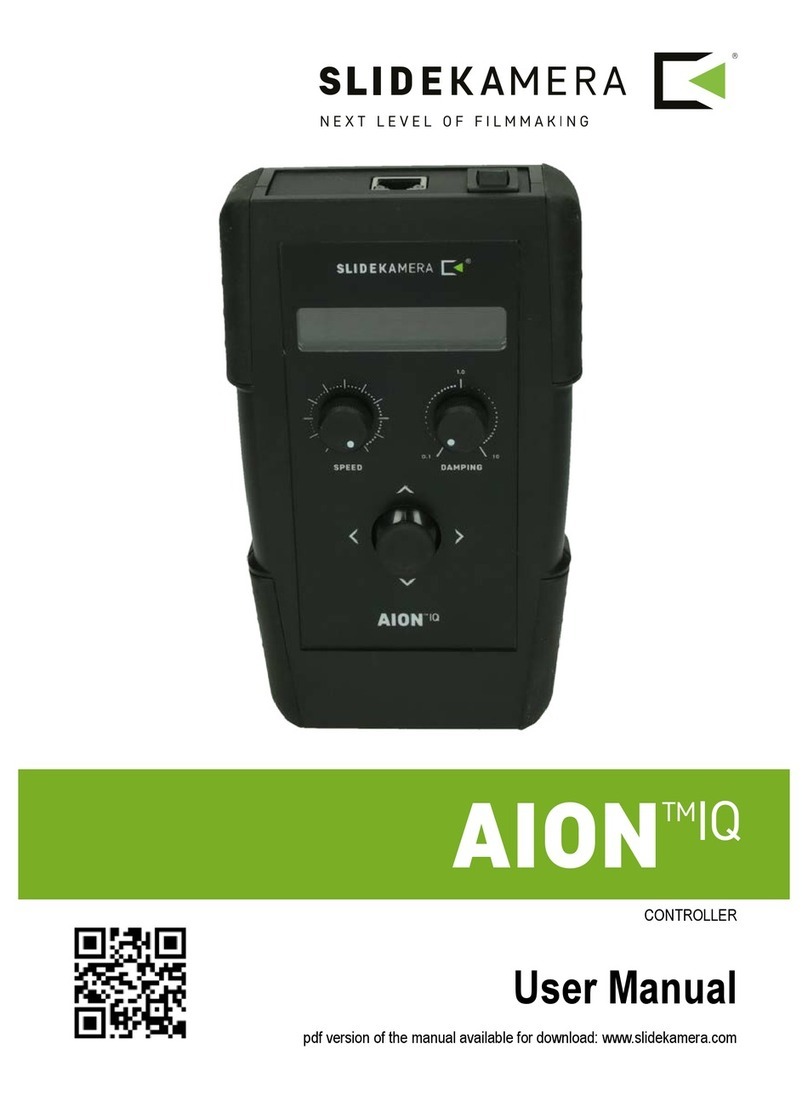
7
To turn the controller on, push the
POWER button on the right hand
side. The splash screen with the
rmware version number will appear.
After connecting and powering the
devices, KAIROS controller detects
available drives.
name of the drive
calibration status
battery charge
scrollbar
calibration mode
cursor
axis number
The LCD screen displays the list of
drives and assigned axes.
Use the joystick to navigate through
menu pages. To change a value
indicated by the cursor and <>
brackets, move the joystick left/right.
If a connected device is not visible on
the list, check the cable connections
and select “Repeat detection”.
Next to the axes names there’s calibration status indicator:
- - the axis is not calibrated, you have to calibrate in order to use it;
^ - the axis has been calibrated and you can use the old data;
™ - safety limits are removed, the axis drive can work innitely;
Make sure that the SLIDER knob is in the center position (speed set to 0%)
and select “Continue” to calibrate selected axes.
You can set the calibration method (use joystick to move the cursor to the
corresponding axis and change the parameter by moving the joystick left-right):
- - the calibration will not be performed, default for previously calibrated drives;
A - automatic calibration (available only for the slider and PDMOVIE motors -
the drive will gently bounce off the edges to nd the working range);
M - manual - working range dened by user.
7. Preparing the controller
7.1. Turn on the controller
7.2. Detecting devices
KAIROS 2
Version: 1.0.9 -
DETECTING
DEVICES...
DEVICES LIST ~
Continue > |
›1S SLIDER -<M>|
2P PANORAMA ^ - }
DEVICES LIST ~
›3T TILT ^<->{
4F PDM red - M |
5Z PDM green - M }
DEVICES LIST ~
›6I PDM blue -<M>{
Repeat detection |
|
TIP
The scrollbar arrows indicate if
there are any positions in the menu
above or below the current screen.
The > bracket indicates that the
position on the list contains another
dialog (e.g. sub-menu).
NOTE
The KAIROS will always list three
PDMOVIE (PDM) drives if a head
with compatible LCS port is con-
nected, even if the drives are not
present.
NOTE
Working with safety limits removed
can cause damage and/or injuries.
For safety reasons the KAIROS
controller cannot set the axes to in-
nite mode, but it may be applied by
another device, e.g. for diagnostics.
NOTE
Always recalibrate the drives, if the
hardware setup was modied, the
drive was moved manually or the
power was lost during operation.






























